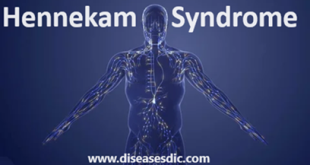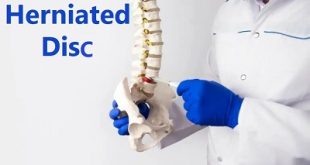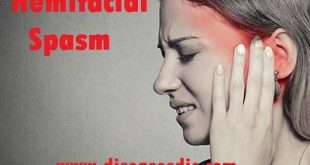Introduction
Hair loss is a disorder in which the hair falls out from skin areas where they are usually present, such as the scalp and the body. This loss interferes with the many useful biologic functions of the hair, including sun protection (mainly to the scalp) and dispersal of sweat gland products.
As hair cover to the scalp has psychological importance in our society, patients with hair loss suffer tremendously. The most common hair disorder is termed as alopecia which is frequently used to express the patterned loss of scalp hair in genetically vulnerable men and women.
Hair structure
Each strand of hair is a complex weaving of lifeless protein produced by a teardrop-shaped hair follicle. The hair follicles are made of living cells that receive nourishment entirely from the blood supply under the skin. The hair itself is made up of completely dead cells. Dead hair shaft cells cannot be “revived” to bring your dull hair back to life.
There are hundreds of thousands of hair follicles in the skin covering almost every part of the body. Some hair follicles produce fine almost colorless “peach fuzz” hairs, and others produce thicker pigmented hair shafts. Each hair follicle is a miniature organ that grows a single hair during a phase of growth. That single hair can last for several months or several years, depending on how the follicle has been genetically programmed. Scalp hair follicles tend to have a longer growth phase than eyelash hair follicles.
Stages of hair growth
There are three phases of hair growth, and the hair follicle changes significantly from phase to phase.
- Anagen – Active hair growth that lasts between two to six years
- Catagen – Transitional hair growth that lasts two to three weeks
- Telogen – Resting phase that lasts about two to three months; at the end of the resting phase the hair is shed and a new hair replaces it and the growing cycle starts again
Types of Hair loss
There are many types of hair loss, also called alopecia:
- Involutional alopecia is a natural condition in which the hair gradually thins with age. More hair follicles go into the resting phase, and the remaining hairs become shorter and fewer in number.
- Androgenic alopecia is a genetic condition that can affect both men and women. Men with this condition, called male pattern baldness, can begin suffering hair loss as early as their teens or early 20s. It’s characterized by a receding hairline and gradual disappearance of hair from the crown and frontal scalp.
Women with this condition, called female pattern baldness, don’t experience noticeable thinning until their 40s or later. Women experience a general thinning over the entire scalp, with the most extensive hair loss at the crown.
- Alopecia areata often starts suddenly and causes patchy hair loss in children and young adults. This condition may result in complete baldness (alopecia totalis). But in about 90% of people with the condition, the hair returns within a few years.
- Alopecia universalis causes all body hair to fall out, including the eyebrows, eyelashes, and pubic hair.
- Trichotillomania, seen most frequently in children, is a psychological disorder in which a person pulls out one’s own hair.
- Telogen effluvium is temporary hair thinning over the scalp that occurs because of changes in the growth cycle of hair.
- Scarring alopecias result in permanent loss of hair. Inflammatory skin conditions (cellulitis, folliculitis, acne), and other skin disorders (such as some forms of lupus and lichen planus) often result in scars that destroy the ability of the hair to regenerate. Hot combs and hair too tightly woven and pulled can also result in permanent hair loss.
Epidemiology and prevalence
The prevalence of pattern hair loss may be as high as 98% and as low as 40%. In men, the age of onset usually is between 20 and 25 years, and prevalence and severity of disease increase with age. In general, 30% of white people are affected by age 30 years, 50% by age 50 years, and 80% by age 70 years. The global incidence varies among ethnic groups with the greatest incidence in white people, followed by Asians, African Americans, and Native Americans. In women, the onset of hair loss is usually before 40 years, and according to published data as many as 13% of premenopausal women have some evidence of pattern hair loss. However, the incidence increases in women around the time of menopause and may affect 70% of women over the age of 65 years.
Causes and risk factors of hair loss in both genders
- Physical stress: Any kind of physical trauma, surgery, a car accident, or a severe illness, even the flu can cause temporary hair loss. This can trigger a type of hair loss called telogen effluvium.
- Pregnancy: Pregnancy in women is one example of the type of physical stress that can cause hair loss (that and hormones). Pregnancy-related hair loss is seen more commonly after your baby has been delivered rather than actually during pregnancy.
- Too much vitamin A: Overdoing vitamin A-containing supplements or medications can trigger hair loss.
- Lack of protein: If you don’t get enough protein in your diet, your body may ration protein by shutting down hair growth. This can happen about two to three months after a drop in protein intake.
- Heredity: If you come from a family where women started to have hair loss at a certain age, then you might be more prone to it.
- Female hormones: Just as pregnancy hormone changes can cause hair loss, so can switching or going off birth-control pills. This can also cause telogen effluvium, and it may be more likely if you have a family history of hair loss. The change in the hormonal balance that occurs at menopause may also have the same result.
- Emotional stress: Emotional stress is less likely to cause hair loss than physical stress, but it can happen, for instance, in the case of divorce, after the death of a loved one, or while caring for an aging parent.
- Anemia: Almost one in 10 women aged 20 through 49 suffers from anemia due to an iron deficiency (the most common type of anemia), which is an easily fixable cause of hair loss.
- Hypothyroidism: Hypothyroidism is the medical term for having an underactive thyroid gland. This little gland located in your neck produces hormones that are critical to metabolism as well as growth and development and, when it’s not pumping out enough hormones, can contribute to hair loss.
- Vitamin B deficiency: Although relatively uncommon in the U.S., low levels of vitamin B are another correctible cause of hair loss.
- Autoimmune-related hair loss: This is also called alopecia areata and basically is a result of an overactive immune system. The body gets confused and the immune system sees the hair as foreign and targets it by mistake.
- Dramatic weight loss: Sudden weight loss is a form of physical trauma that can result in thinning hair. It’s possible that the weight loss itself is stressing your body or that not eating right can result in vitamin or mineral deficiencies.
- Chemotherapy: Some of the drugs used to beat back cancer unfortunately can also cause your hair to fall out. Chemotherapy is like a nuclear bomb. It destroys rapidly dividing cells but also rapidly dividing cells like hair.
- Polycystic ovary syndrome: Polycystic ovary syndrome (PCOS) is another imbalance in male and female sex hormones. An excess of androgens can lead to ovarian cysts, weight gain, a higher risk of diabetes, and changes in your menstrual period, infertility, as well as hair thinning.
- Antidepressants, blood thinners, and more: Drugs that might cause hair loss include methotrexate (used to treat rheumatic conditions and some skin conditions), lithium (for bipolar disorder), nonsteroidal anti-inflammatory drugs (NSAIDs) including ibuprofen, and possibly antidepressants.
- Overstyling: Vigorous styling and hair treatments over the years can cause your hair to fall out. Examples of extreme styling include tight braids, hair weaves or corn rows as well as chemical relaxers to straighten your hair, hot-oil treatments or any kind of harsh chemical or high heat.
- Trichotillomania: Trichotillomania, classified as an “impulse control disorder,” causes people to compulsively pull their hair out. Unfortunately, this constant playing and pulling can actually strip your head of its natural protection: hair. Trichotillomania often begins before the age of 17 and is four times as common in women as in men.
- Aging: It’s not uncommon to see hair loss or thinning of the hair in women as they enter their 50s and 60s.
- Anabolic steroids: If you take anabolic steroids—the type abused by some athletes to bulk up muscle—you could lose your hair, according to the American Academy of Dermatology.
Symptoms and signs of Hair loss
- Gradual thinning on top of head. This is the most common type of hair loss, affecting both men and women as they age. In men, hair often begins to recede from the forehead in a line that resembles the letter M. Women typically retain the hairline on the forehead but have a broadening of the part in their hair.
- Circular or patchy bald spots. Some people experience smooth, coin-sized bald spots. This type of hair loss usually affects just the scalp, but it sometimes also occurs in beards or eyebrows. In some cases, your skin may become itchy or painful before the hair falls out.
- Sudden loosening of hair. A physical or emotional shock can cause hair to loosen. Handfuls of hair may come out when combing or washing your hair or even after gentle tugging. This type of hair loss usually causes overall hair thinning and not bald patches.
- Full-body hair loss. Some conditions and medical treatments, such as chemotherapy for cancer, can result in the loss of hair all over your body. The hair usually grows back.
- Patches of scaling that spread over the scalp. This is a sign of ringworm. It may be accompanied by broken hair, redness, swelling and, at times, oozing.
Complications associated with Hair loss
Autoimmune conditions
Someone with alopecia areata is more likely to have or to develop other autoimmune conditions, such as:
- Thyroid disease – conditions that affect your thyroid gland, such as an overactive thyroid (hyperthyroidism)
- Diabetes -a condition that is caused by too much glucose (sugar) in the blood
- Vitiligo a condition that produces white patches on the skin
These conditions are all linked to problems with the immune system (the body’s natural defence against infection and illness). In autoimmune conditions, your immune system produces antibodies (proteins) that should fight infections, but instead they attack your body’s healthy tissues.
Emotional issues
Hair loss can be difficult to come to terms with. The hair on your head can be a defining part of your identity. It reflects the image that you have of yourself and how you want others to see you.
If you start to lose your hair, it can feel as if you are losing part of your identity. This can affect your self-confidence and sometimes lead to depression
Speak to your GP if you are finding it difficult to deal with your hair loss. They may suggest counselling, which is a type of talking therapy where you can discuss your issues with a trained healthcare professional.
Hair loss diagnosis and test
Before making a diagnosis, your doctor will likely give you a physical exam and ask about your medical history and family history. He or she may also perform tests, such as the following:
- Blood test. This may help uncover medical conditions related to hair loss, such as thyroid disease.
- Pull test. Your doctor gently pulls several dozen hairs to see how many come out. This helps determine the stage of the shedding process.
- Scalp biopsy. Your doctor scrapes samples from the skin or from a few hairs plucked from the scalp to examine the hair roots. This can help determine whether an infection is causing hair loss.
- Light microscopy. Your doctor uses a special instrument to examine hairs trimmed at their bases. Microscopy helps uncover possible disorders of the hair shaft.
Treatment and Medications
Hair loss remedies range from the mild to the extreme and the inexpensive to the costly. Much depends on how much hair is gone and how high a priority it is to mask its absence or replace it.
Topical creams and lotions: Over-the-counter minoxidil (also known as the brand name Rogaine) can restore some hair growth, especially in those with hereditary hair loss. It is applied directly to the scalp. Prescription-strength finasteride (Propecia) comes in pill form and is only for men.
Anti-inflammatory medications: Prescription steroid-based creams or injections can calm follicles damaged or inflamed by harsh chemicals or excessive pulling.
Surgery: Men tend to be better candidates for surgical hair-replacement techniques because their hair loss is often limited to one or two areas of the scalp. Procedures include grafting, which transplants from one to 15 hairs per disc-shaped graft to other locations. Scalp reduction removes bald skin from the scalp so hair-covered scalp can be stretched to fill in the bald areas. Side effects include swelling, bruising and headaches.
Hair Transplantation with Grafts Obtained from an Elliptical Stripfrom the Back of the Scalp.
Hair-growth laser treatment can also help to stimulate hair follicles and improve growth. People often see results when they combine laser treatment with another intervention.
Hair weaves or wigs: Typically expensive, wigs and hair weaves either completely cover the head or add to existing hair, restoring the appearance of a full head of hair. They are especially practical for cancer patients and those whose hair loss is temporary.
Immunotherapy
Immunotherapy may be an effective form of treatment for extensive or total hair loss, although fewer than half of those who are treated will see worthwhile hair regrowth. A chemical solution called diphencyprone (DPCP) is applied to a small area of bald skin. This is repeated every week using a stronger dose of DPCP each time.
Ultraviolet light treatment
Two to three sessions of light therapy (phototherapy) are given every week in hospital. The skin is exposed to ultraviolet (UVA or UVB) rays. In some cases, before your skin is exposed to UV light you may be given a medicine called psoralen, which makes your skin more sensitive to the light. The results of light therapy are often poor. The treatment can take up to a year to produce maximum results and responses.
It’s often not a recommended treatment because side effects can include:
- Nausea (feeling sick)
- Pigment changes to the skin
- An increased risk of skin cancer
Tattooing
For many people, it’s possible to replicate hair with a tattoo. This is known as dermatography and generally produces good long-term results, although it is usually expensive and can only be used to replicate very short hair. This is usually carried out for eyebrows over a few hourly sessions and can even be used as a treatment for scalp hair loss caused by male-pattern baldness.
Hair Loss Tattoo Micropigmentation
Complementary therapy
Aromatherapy, acupuncture and massage are often used for alopecia, but there isn’t enough evidence to support their use as effective treatments.
Prevention and control of hair loss in both men and women
Avoiding Damaging your Hair
- Limit your use of hair dryers. Heat weakens hair proteins. Constant heating and drying can lead to brittleness and fragility that can cause hair loss
- Avoid perms. Perming refers to either chemical straightening or chemical curling, both of which can damage your hair.
- Cut down on dyes and chemicals. Frequent use of hair colouring chemicals increases the chances of serious damage being done to your hair.
- Don’t bleach your hair. Bleaching your hair removes your natural pigment when the cuticles are penetrated by chemicals. By doing this you are changing the structure of your hair and making it more susceptible to damage.
- Don’t pull your hair too tight. Some hairstyles that require tight pulling and elastics or clips can be a cause of hair loss if done on a daily basis. For example, tight ponytails, tight braids, cornrows, and plaits can lead to significant hair loss when done daily.
Caring Actively for your Hair
- Wash hair with mild shampoo. Hair washing helps prevent hair loss as it can keep your hair and scalp clean (preventing the chances of infections that might cause hair loss).
- Choose a suitable shampoo for your hair type. Getting a good shampoo will really help you to have a healthy head of hair, so take some time to find that matches your hair type.
- Look at the ingredients to find a mild shampoo. Using a mild shampoo can help you maintain a healthy scalp and head of hair. Checking the ingredients in your shampoo can give you a good idea of whether or not it is mild. Avoid anything with sulfate, parabens, and/or sulfonate. Instead look for Isethionate or Glucoside to be the first ingredient after water.
- Use a good hairbrush. How you brush your hair can have a big impact on the condition of your hair. Go for a soft brush made from natural fibres, and don’t brush from the top down, but from the underside out. Be as gentle as you can and don’t pull too hard.
- Try a scalp massage. A scalp massage with a nourishing oil (such as coconut, rosemary, lavender, or almond oil) will increase the blood flow to the surface of the skin on your head and your hair follicles.
- Test your hair for thinning if you’re concerned. Testing whether or not you’re suffering from hair loss can be done using what is known as the “tug test”. Take a small bunch of hair, about 20–30 hairs, and hold it between your thumb and index finger. Pull slowly but firmly; if more than six hairs come out at the same time, you may have a hair loss problem.
Eating Right for Healthy Hair
- Have a healthy balanced diet. Nutritional responses to preventing hair loss are simple common sense approaches to keeping you, your hair, and your scalp healthy.
- Consume plenty of iron. Iron is an essential mineral that is known as heme iron in animal food sources and non-heme iron in plant sources.
- Eat enough protein. Protein is essential for strong hair. A deficiency in protein can lead to dry and weak hair, and ultimately, hair loss.
- Consume Vitamin C. Foods with plenty of vitamin C help in the good absorption of iron, so try to combine iron-rich foods with those that are high in vitamin C to get the most out of the iron. Vitamin C also help with your body’s production of collagen, which in turn strengthens the capillaries which supply your hair shafts.
- Ensure you get enough Omega-3 fatty acids. These fats keep hair healthy and have a role in preventing hair from becoming dry and brittle.
- Eat foods rich in biotin. Biotin is a B vitamin that is water soluble. It is of particular importance for your hair, as a deficiency can cause your hair to become brittle and could accelerate hair loss.
- Consider taking supplements. Talk with your medical practitioner first, but you might like to consider using supplements to prevent hair loss.
- Know what to avoid eating. As well as knowing what’s good to consume, it’s best to know what to avoid too.
 Diseases Treatments Dictionary This is complete solution to read all diseases treatments Which covers Prevention, Causes, Symptoms, Medical Terms, Drugs, Prescription, Natural Remedies with cures and Treatments. Most of the common diseases were listed in names, split with categories.
Diseases Treatments Dictionary This is complete solution to read all diseases treatments Which covers Prevention, Causes, Symptoms, Medical Terms, Drugs, Prescription, Natural Remedies with cures and Treatments. Most of the common diseases were listed in names, split with categories.








I thankful to you.Where i can buy monodxil.please inform me by email.thanks
It is commonly available in pharmacies. But this medicine is having varying concentrations. But please consult with a dermatologist before the application of minoxidil.
very good article
Thanks
pls wia can i see d coconut hair cream to buy
You can see in nearby pharmacy or in online shopping websites.
Excellent information.?
Don’t use Minoxidil without consulting Skin specialist.
As you said, pregnant women should consult with dermatologist before having minoxidil for hair loss problems.
thanku sir
is amway shampoo good ,,,afterall I am losing my hair
Before that please consult with your Dermatologist. Because the medications may vary according to your scalp conditions.
Thanks
am 23yrs n l still dnt show any sign of growing bear
am from Ghana where and how can I get them and how much and the name of the medicine
Sir please properly mention the medicine name that u need. So that we can guide your queries related to Hair loss.
useful information thanks
and let me know about the benefit of garlic and onion juice. for scalp massage are they useful too.
Wow I am glad to see the information about the hair in a easy and right way to find all at a same place ., thank you so much
hair loss decrease shampoo name
Use minoxidil 5% or 2% solution and wash your hair with anti hairfall shampoo. But before starting your treatment please consult a dermatologist about the dose and concentration of minoxidil. He/She will decide those parameters according to your scalp conditions. Discuss what shampoo to be used after minoxidil application.
How can I remove my hair loss…
plz tell me any medicine. Now I m use 2% ketoconazole Shampoo.
Minoxidil solution is better for hair loss. But please consult with a dermatologist to discuss the dosage and concentration of minoxidil.
thnx fr sch a nyc info
i am 28 and still show no signs of a beard
It might be due to hormonal imbalances. Please consult a good dermatology specialist.
They are some products now in the market with different names for hair growth and for baldness, please is it advisable to use any of them ????
Please consult with a doctor before using such products. Because a doctor will prescribe medications according to your stage of baldness.
I need the medication
which medicine I well take
check in the post for hair loss medication.
that’s really good and helpful app to knw causing about illness
im 24 so this prblm is hair loss so what me usse the hair loss and medicine so plzz help us
Follow the natural treatments given in the post. Also, consult a dermatologist to make sure the hair loss is because of health issues.
Which shampoo is reduced hair fall name the shampoo pls
Pleasae consult with a dermatologist.
Name the shampoo reduced hair loss
Consult a dermatologist as soon as possible.
Good ….which medicine should we use
please consult a doctor to get medicines.
I have a thick eyebrow before but when I taking a female hormone and I uprooted my eyebrow it’s not going back again my eyebrow I’m a gay now I want it back may thick eyebrow again what medicine or any treatment is the best in my eyebrow
Please consult a doctor as soon as possible.
thanks
also i tried for days onion juice…but no result….im losing my hair everyday
What is hair prp. Is it beneficial
PRP (platelet-rich plasma) therapy for hair loss is a three-step medical treatment in which a person’s blood is drawn, processed, and then injected into the scalp.
I am just 18 and losing my hairs so please suggest which hair oil has to be used to control my losing hairs..
Please take enough iron diet and get a prescription from a dermatologist.
very good information about every point to point.
we are appriciated this app developers
I am having alopecia areata and so much hair falling and greying. vit d is too low. now taking medicine for vit d. still hair falling. which blood test I have to do for this. can I check the ANA test? I. am having alopecia areata can I use minoxidil
Consult a dermatologist for appropriate prescription of medicine.
I have hair loss problem I use evion capsule and conaz shampoo is it good for?
You can use the vitamin E gel from the supplement Evion capsules as a topical skin treatment. Conaz shampoo is prescribed for only Scalp infections like dandruff.
where can I get some of the supplement please
You can find supplements for hair loss at pharmacies, health food stores, online retailers like Amazon, and some supermarkets. Specialty beauty stores or salons may also carry products designed to promote hair health. Before starting any supplements, consult with a healthcare professional to ensure they are suitable for your individual needs and won’t interact with medications or health conditions. If experiencing significant hair loss, seek advice from a healthcare provider for a comprehensive evaluation and personalized recommendations.